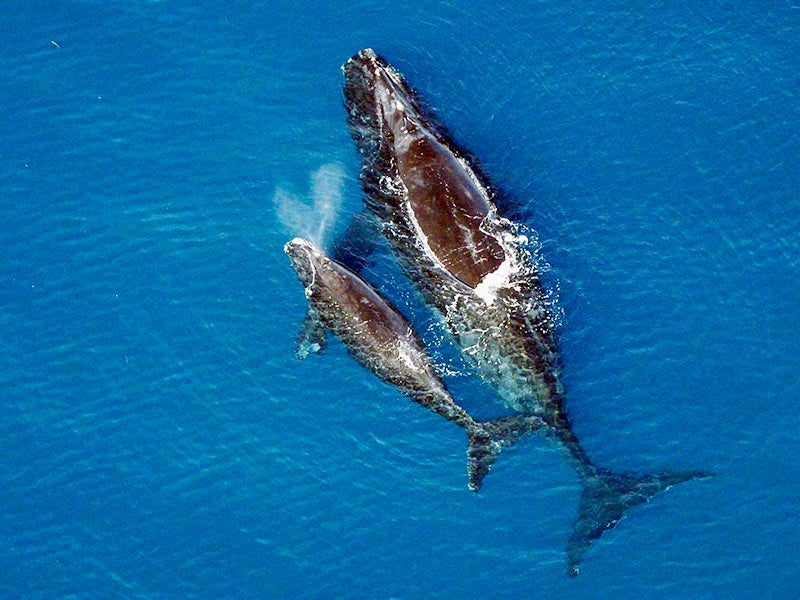Seismic Blasting Would Deafen Marine Mammals
As companies search for oil and gas deposits buried beneath the ocean floor in the Atlantic, whales and dolphins could suffer permanent hearing damage and even death.

This page was published 8 years ago. Find the latest on Earthjustice’s work.
Imagine an underwater blast so loud that it can be heard by marine mammals that are 2,500 miles away. That’s the level of noise generated when companies fire airguns to blast the ocean floor with sound in order to find oil and gas deposits.
Such seismic testing could begin soon off the U.S. East Coast after Trump ordered federal agencies to reconsider the Obama administration’s five-year ban on offshore drilling in the Atlantic. On June 6, the National Marine Fisheries Service proposed five authorizations for companies on the hunt for oil and gas. These companies want to conduct seismic surveys of the Atlantic seabed.
The noise would have serious impacts on marine mammals like whales and dolphins, which rely heavily on sound to communicate, navigate and find prey. Flooding the ocean with noise from seismic surveys could inflict permanent hearing damage on these creatures, leaving them deaf and stranded. At the very least, seismic blasts would disrupt the animals’ behavior hundreds of thousands of times and could drive them away from vital habitats.
By granting these five proposed authorizations, the National Marine Fisheries Service would allow marine mammals to become casualties of oil and gas exploration. But it’s not too late—the service is taking public comments on these proposed authorizations until July 21. Below, you can tell the service to deny these dangerous permits, and protect whales and dolphins from seismic airgun blasting.
The following numbers demonstrate how devastating these seismic surveys would be:
240 decibels
Approximate volume of seismic airgun blasting underwater. For a little perspective, one of the loudest animals, the blue whale, makes calls louder than 180 decibels. When you go up by 10 decibels, it means a sound gets 10 times more intense. So a seismic airgun blast is 1 million times more intense than a blue whale call—powerful enough to deafen one of these massive creatures.
2,500 miles
How far seismic blasts can travel underwater—approximately the distance from New York City to Los Angeles. That means it’s possible for a whale near Florida to hear seismic surveys operating off the coast of South Carolina.
200,000 square miles
Area of the Atlantic Ocean that the proposed seismic airgun surveys would blast. The airguns discharge resounding booms at 12 to 16 second intervals, 24 hours a day, seven days a week, for months on end.
350,000
Approximate number of times in one year that whales and dolphins will be harassed by seismic blasting, according to permits drafted by the National Marine Fisheries Service. The service estimates that nearly 2,000 of the exposures will be loud enough to cause permanent hearing loss, which would severely impede the marine mammals’ ability to communicate and find food.
28
Species of marine mammals that the National Marine Fisheries Service would allow companies to harm, if the agency’s proposed authorizations are finalized. Six of these species are endangered or threatened under the Endangered Species Act, including the North Atlantic Right Whale—a critically endangered species with a population of less than 500.
Earthjustice’s Oceans Program uses the power of the law to safeguard imperiled marine life, reform fisheries management, stop the expansion of offshore oil and gas drilling, and increase the resiliency of ocean ecosystems to climate change.